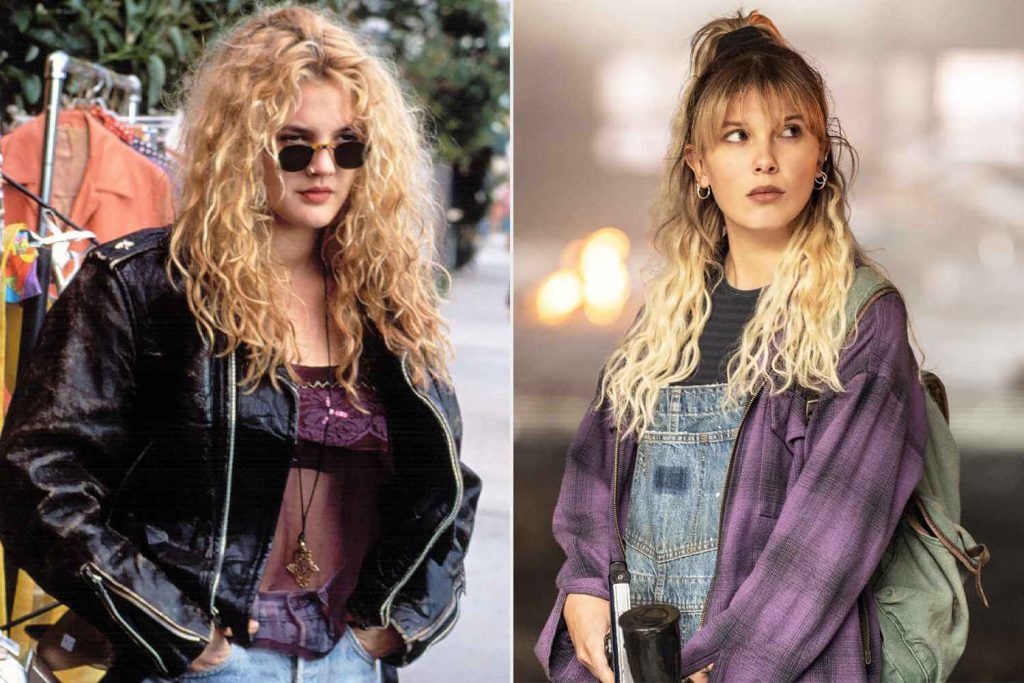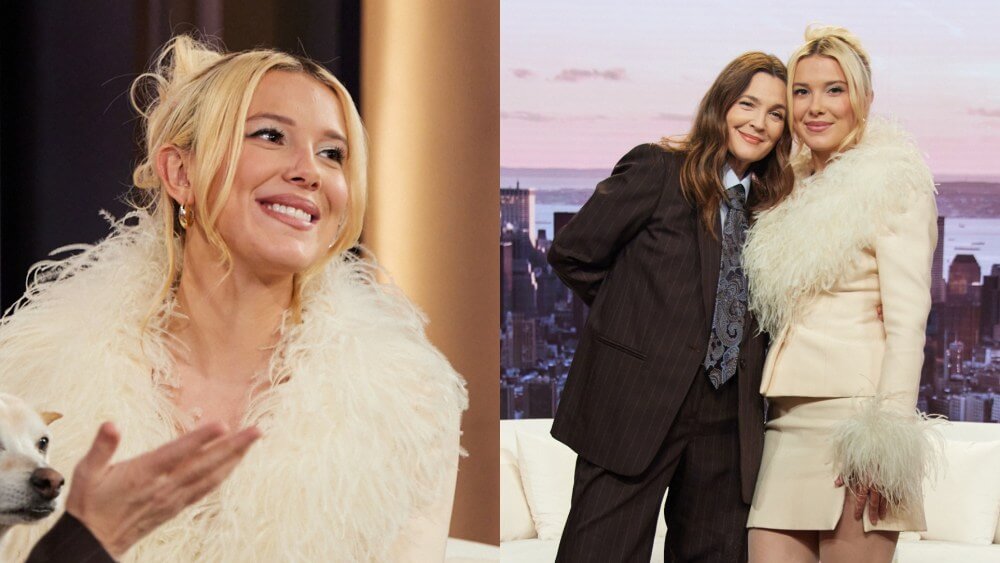World News
Millie Bobby Brown Channels Drew Barrymore: Crafting ‘The Electric State’ Look
Inspiration from a ’90s Icon: Drew Barrymore’s Influence
The 1990s were a defining decade for film and fashion, producing countless iconic styles that continue to inspire today. One of the standout figures from that era was Drew Barrymore, whose roles in films like Poison Ivy left an indelible mark on pop culture.
For Millie Bobby Brown, preparing for her lead role in The Electric State, Barrymore’s Poison Ivy look became a key reference point. During an appearance on The Drew Barrymore Show, Brown revealed that Barrymore’s aesthetic was central to her character’s visual development. In a moment of admiration, she told Barrymore, “You didn’t make it—you were the mood board.”
The character Brown plays in The Electric State, Michelle, embarks on a journey through a dystopian America, searching for her missing brother. To bring her to life, Brown and the film’s creative team drew from 1990s influences, with Barrymore’s signature style playing a major role.

Translating ‘Poison Ivy’ Aesthetics to a Post-Apocalyptic Narrative
Set in a post-apocalyptic 1990s, The Electric State required a character design that felt authentic to the decade while also reflecting Michelle’s emotional and physical struggles. Barrymore’s Poison Ivy look—marked by its bold, rebellious style—served as the foundation for Brown’s transformation.
While Poison Ivy showcased Barrymore’s voluminous blonde curls and edgy wardrobe, Brown’s portrayal of Michelle required some adjustments. To match the film’s darker themes, the creative team made subtle modifications:
- Blonder Hair with Grown-Out Roots: The hair team opted for a slightly paler blonde while allowing Brown’s roots to show, symbolizing Michelle’s detachment and emotional turmoil.
- Grunge and Distressed Clothing: Instead of the polished rebellious look of Poison Ivy, Michelle’s wardrobe features worn-out, layered outfits that reflect the harsh world she navigates.
- Muted Color Palette: While Barrymore’s look had a seductive vibrancy, Brown’s character is designed to appear more fatigued and rugged, embracing a washed-out, almost survivalist aesthetic.
By merging the rebellious spirit of the ’90s with a post-apocalyptic edge, Brown and the costume team crafted a look that is both nostalgic and fitting for the story’s world.
Millie Bobby Brown’s Commitment to ’90s Authenticity
Beyond her on-screen portrayal, Brown fully embraced 1990s culture throughout her press tour for The Electric State. She actively channeled fashion icons of the era, wearing a series of outfits reminiscent of some of the most stylish figures of the time.
Some of her notable nods to the decade included:
- A Versace Two-Piece inspired by Fran Drescher’s character in The Nanny.
- A Feather-Trimmed Ensemble reminiscent of Barrymore’s Never Been Kissed red carpet look.
- Vintage Pamela Anderson-Inspired Pieces, blending glamour with grunge.
By incorporating original ’90s fashion pieces into her personal style, Brown showcased her dedication to authenticity. This approach not only celebrated the film’s setting but also highlighted her appreciation for the era’s cultural impact.

Drew Barrymore’s Endorsement and the Legacy of ‘Poison Ivy’
Few films capture ’90s rebellious femininity quite like Poison Ivy, and Barrymore’s performance has remained a touchstone for young actresses exploring edgy, layered characters.
When Barrymore learned that Brown’s look in The Electric State was inspired by her, she was both flattered and excited. She acknowledged the resemblance and expressed admiration for Brown’s commitment to bringing ’90s aesthetics into a new generation.
This exchange between Barrymore and Brown highlights how film influences transcend generations. Just as Barrymore once redefined rebellious youth in the ’90s, Brown now carries that torch in a modern cinematic landscape.
The Electric State’s Exploration of Technology and Human Connection
While The Electric State is visually steeped in ’90s nostalgia, its themes are deeply relevant to modern audiences. The film explores the dual nature of technology—its ability to connect and alienate—which mirrors many of today’s conversations about digital life.
In the movie, Michelle’s journey is deeply personal, but it is also framed by a world where robots serve as both companions and threats. This dichotomy between human connection and artificial intelligence is particularly meaningful given today’s digital age.
Brown herself has commented on how the story resonates with contemporary struggles, particularly among young people navigating social media, mental health, and technological dependence. By anchoring this futuristic exploration within a ’90s aesthetic, The Electric State offers a unique blend of nostalgia and forward-thinking storytelling.
Conclusion
Millie Bobby Brown’s transformation in The Electric State is a testament to the lasting influence of ’90s film and fashion. By drawing inspiration from Drew Barrymore’s Poison Ivy look, Brown and her team crafted a character that is both visually striking and deeply connected to the film’s thematic core.
Through thoughtful character design, immersive fashion choices, and a compelling narrative, The Electric State bridges the past and the future, creating an experience that resonates across generations. And in doing so, it reaffirms that great cinematic style never truly fades—it simply evolves.
From dragontrendtees


